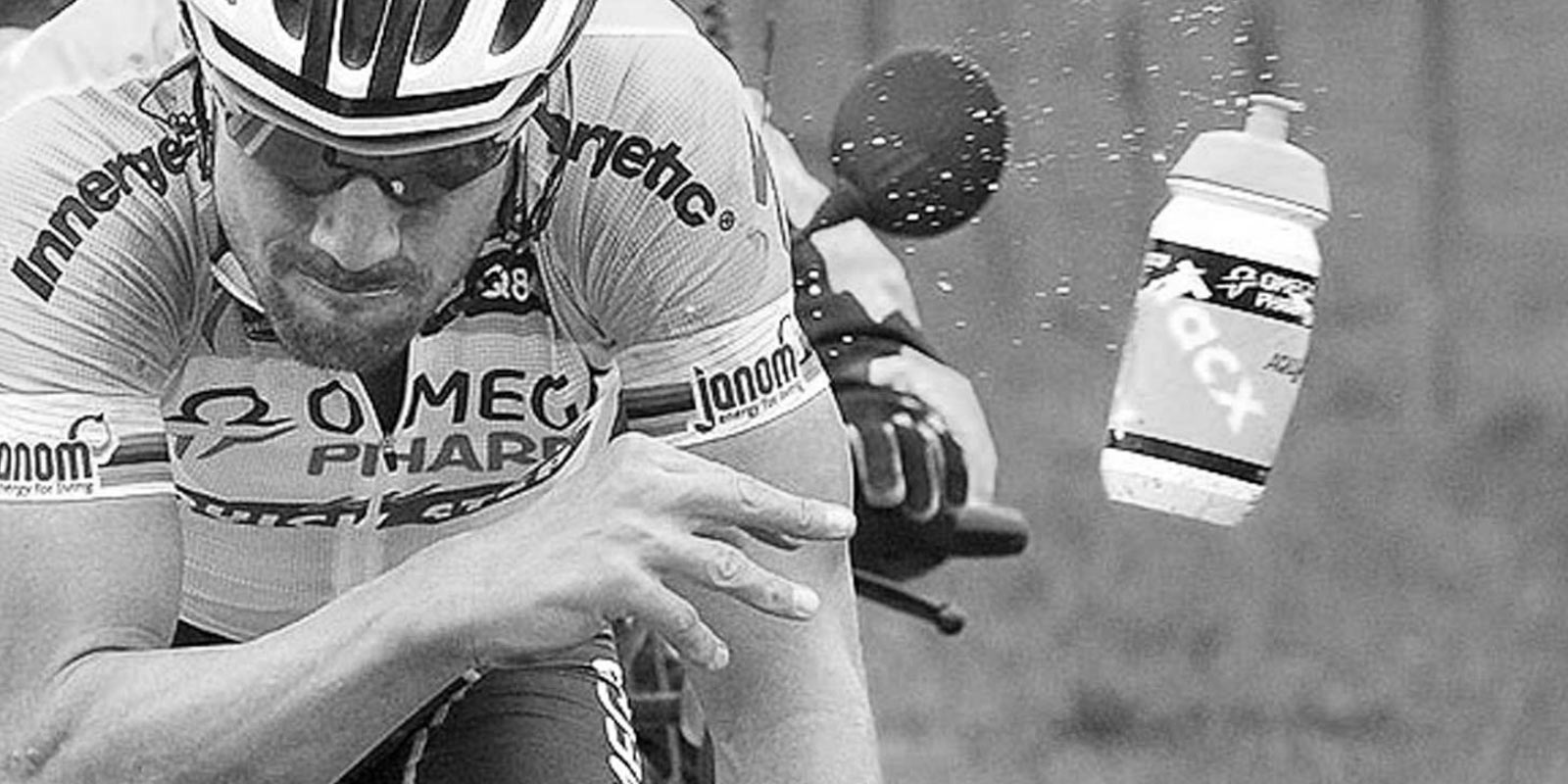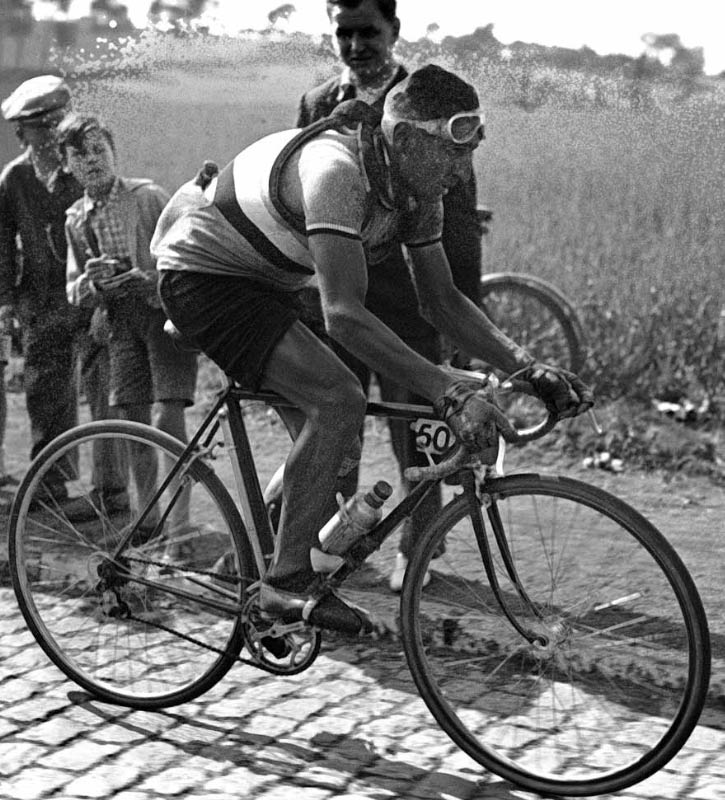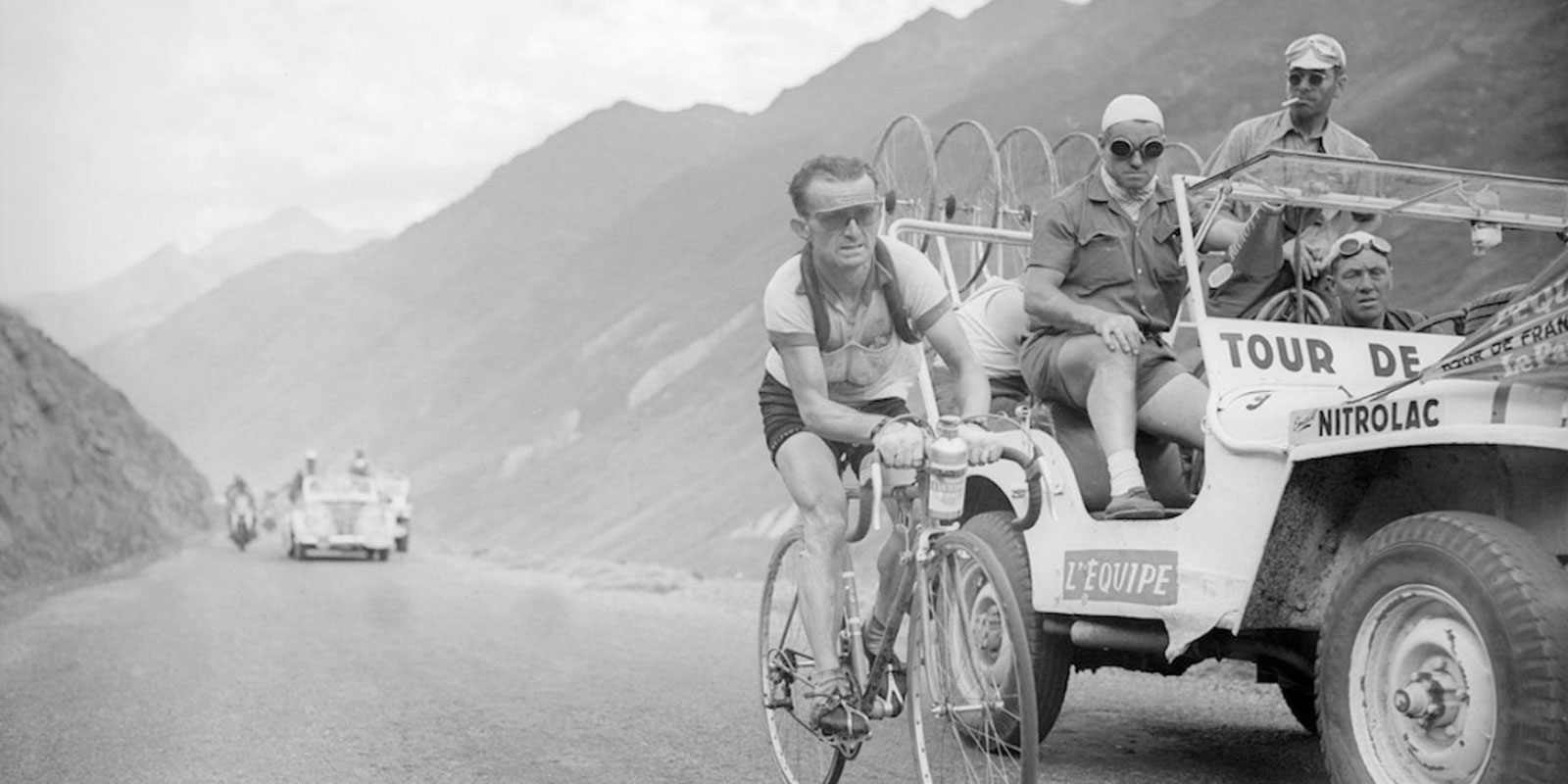The humble bidon is an undervalued but essential cycling accessory. This many of us know already. But a dip into the history books shows us that our native countrymen played some crucial roles in the evolution of the water bottle, and created some interesting stories along the way.

In a bottle cage of course. But where does that bottle cage go?
It was apparently a Belgian rider, Firmin Lambot, who first placed his water bottle in a bag attached to his handlebars. That developed into the accepted technique of eventually having two bottles mounted in cages up front.
René Vietto, our local hero, is famous for that photo of him giving his wheel to his team leader, and in one moment showing to the world the sacrifice of a talented domestique capable of winning the race himself. But the man from Cannes, like so many other successful racers, was meticulous about every element of his cycling. This included of course the tool for his job and eventually he questioned the accepted tradition as he noticed how the bidons on his handlebars significantly compromised handling. So he moved one to the downtube during the 1939 Tour de France. And voilà, by the 1950s everyone had adopted the style we know today. (Not the first time a gallic cyclist has lead the way in cycling fashion we might add…..)

How about Fausto Coppi’s favourite - “Binda Zabaione” consisting of 20 beaten egg yolks and some sugar? Or swap your egg for eggnog, add brandy and advocaat for a bombardino, a favourite of Italian pros when training through the winter.
In the early days of the Tour alcohol was favoured rather than taking the risk of infection from roadside springs and fountains. Of course, wine featured heavily – a tradition we would consider reinventing.
Lead on the other hand is not an obvious substance for the humble bidon. Jean Robic, like René Vietto, was interested in the effect of the weight of his bidon, but for a different reason. During the 1951 Tour, he worried that his light weight would be a disadvantage on the descent of the mountain trial and decided to add some pounds by putting lead in his bidon. Towards the end of the descent he became unbalanced by the heavy weight of the bidon and fell badly. A few days later he was forced to abandon the Tour.


WHEN TO USE IT?
All the time. Some say you should drink every 15 minutes on any ride of more than two hours to keep on top of your hydration.
If, like us, you have cramped on a big ride (a particular instance during the the last five kilometres of the Col de Turini comes painfully to mind) you will never forget the importance of having liquid supplies with you at all times. Here we turn to another Frenchman for inspiration.
In modern times, of course, team cars and domestiques can ensure that stage winners and GC riders will always have a bidon close to hand. So much so that they can dispense with a second bottle - the famous gurning frenchman, Thomas Voeckler, is known to have only one bottle cage on his bike to save weight. That performance gain helps when he attacks, but attacking sometimes makes you unpopular, as M. Voeckler reported - some riders 'threatened to throw their bidons at me if I attacked.”
Now there is a use we hadn't considered.

